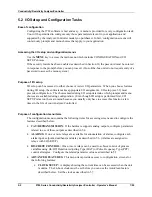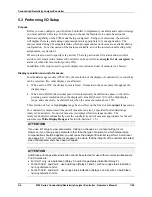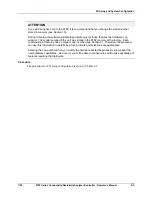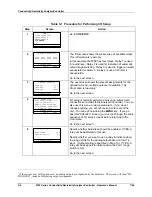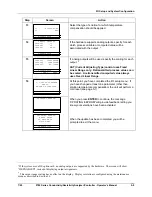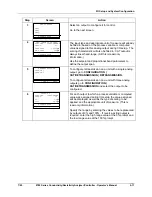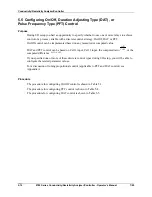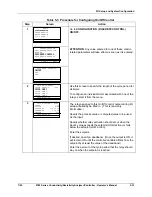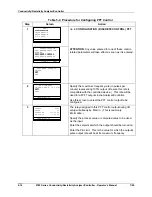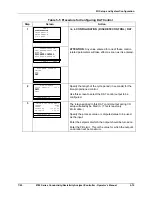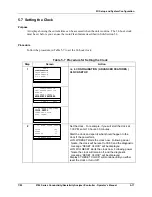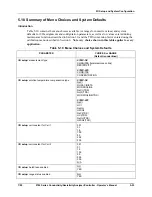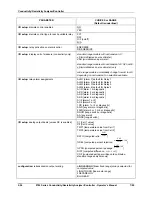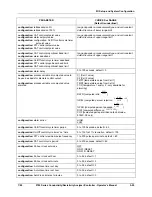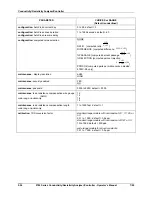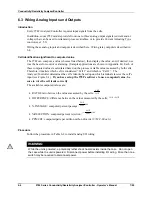
Conductivity/Resistivity Analyzer/Controller
9782 Series Conductivity/Resistivity Analyzer/Controller - Operator’s Manual
7/99
5-16
5.6 Configuring Alarms
Purpose
If you assigned one or more alarms to at least one relay during I/O setup (described in 5.3), then
for each alarm select the process value or computed value to be alarmed, setpoint, deadband, and
delay as described below.
Procedure
The procedure for configuring parameters for an alarm is described in Table 5-6.
Table 5-6 Procedure for Configuring Alarms
Step
Screen
Action
1
MENU
CONFIGURATION
CALIBRATION
MAINTENANCE
I/O SETUP
DIAGNOSTICS
| PREV | NEXT
Go to CONFIGURATION | ALARMS.
CONFIGURATION
CAT/RETRANSMISSION
ALARMS
DISCRETE CONTROL
ADVANCED FEATURES
DIAGNOSTICS
| PREV | NEXT
ATTENTION: Any value entered for one of these alarm-
related parameters will take effect as soon as it is entered.
2
ALARMS
DELAY TIME 3 S
ALARM1
ALARM2
ALARM3
ALARM4
DIAGNOSTICS
| |
Use this screen to enter a delay time to prevent brief
process upsets from activating an alarm. The delay
entered here will apply to all alarms.
Select the alarm to be configured.
3
ALARM1
OUTPUT RLY2
INPUT C1
ACTION HIGH
SP 15000 µS
DEADBAND 250 µS
DIAGNOSTICS
| |
The relay to which the alarm was assigned during I/O
setup will be displayed as read-only information.
Enter the measured variable or computed value to be
alarmed.
Indicate whether this is a high or low alarm.
Enter the setpoint value at which the alarm will become
active.
Specify the deadband. Once the alarm is active, it will not
deactivate until the alarmed variable differs from the
setpoint by at least the value of the deadband.

